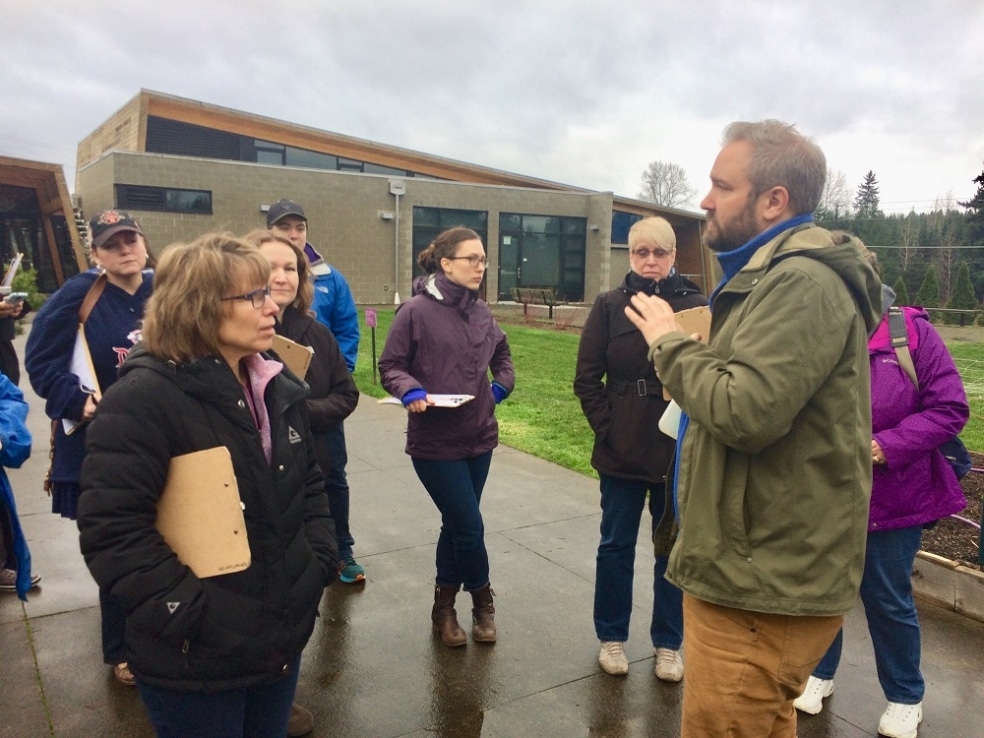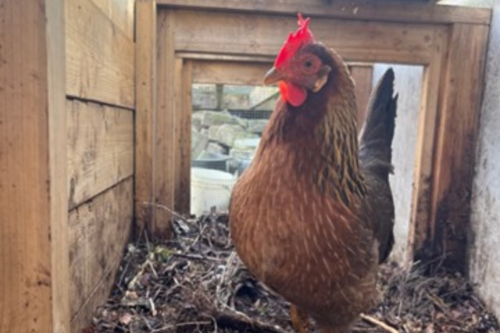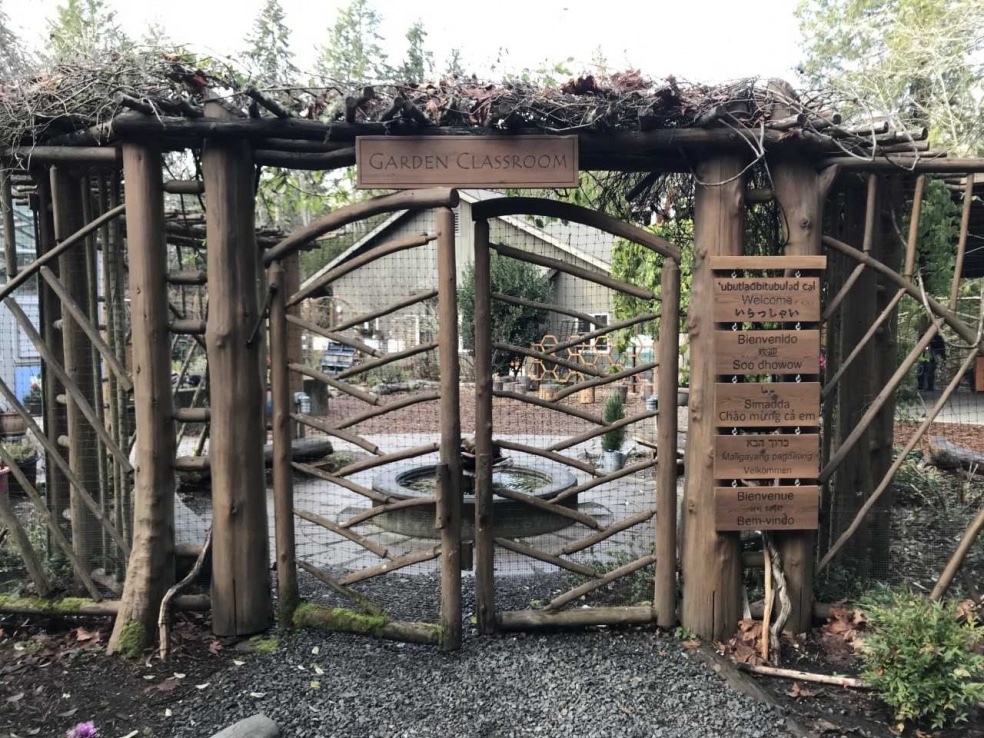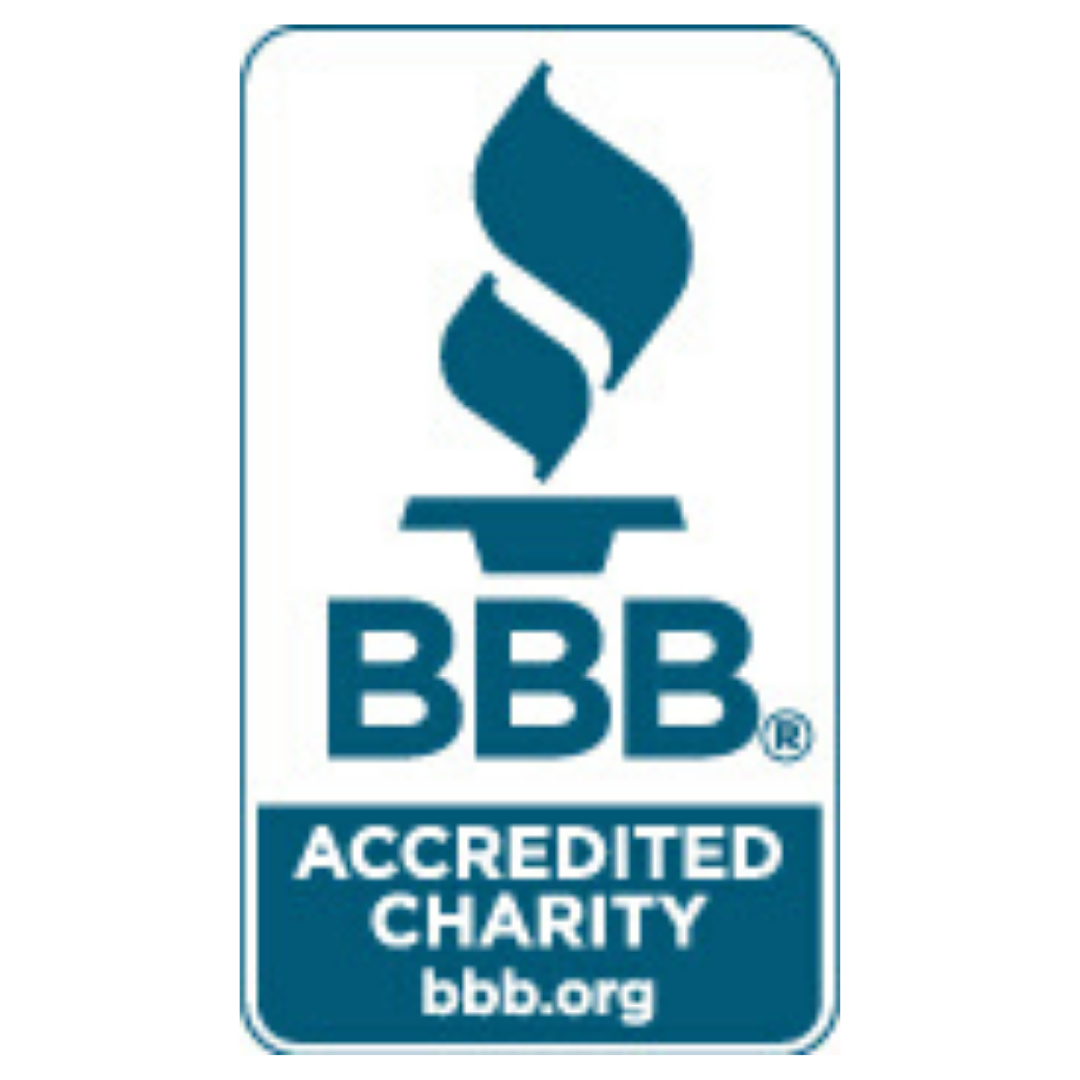Washington State formally adopted the Next Generation Science Standards (NGSS) in 2013, but to many…
Author: Hanna Hupp
While working with a group to clean up the school grounds, 4th grade teacher Kelli Elder found herself contemplating the effect of yard waste on storm drains.
She was struck by the idea of helping her students understand the importance of “knowing where [their] water goes, what gets put into storm drains, and, most of all, how to get involved in keeping drains clear.” Kelli wanted her students to know that “our beautiful Lake Washington is right here and must be taken care of – starting with us.”
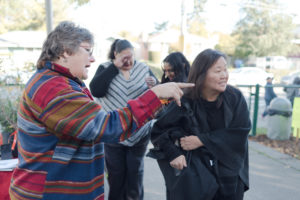
Teacher Kelli Elder (left) at the rain garden ribbon cutting ceremony. Image courtesy of Seattle Public Utilities.
Her school, Martin Luther King Jr. Elementary, is located in Rainier Valley, which is impacted by flooding, as well as polluted stormwater runoff flowing into Lake Washington. But with the challenges inherent in this location also come opportunities for creativity, innovation, and change.
Eager to take advantage of these opportunities, Kelli contacted Gretchen DeDecker, Seattle Public Schools Facilities department’s Self Help Projects Program Manager, who then laid the groundwork for Martin Luther King Jr. Elementary to take advantage of the RainWise rebate program. Run through a joint collaboration between King County and Seattle Public Utilities, RainWise provides rebates to home owners, and in this case, schools, to build rain gardens or install cisterns to help manage stormwater.
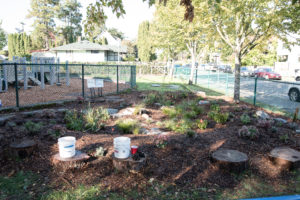
The rain garden at Martin Luther King Jr. Elementary. Image courtesy of Seattle Public Utilities.
Rain gardens are shallow bowl-like depressions in the ground, often incorporating native plants and a soil composition specifically designed to increase rain water collection and filtration. Because they can be powerful tools to reduce polluted runoff by slowing, filtering, and absorbing excess stormwater from downspouts, implementing a rain garden proved to be the ideal choice for Martin Luther King Jr. Elementary.
In addition, Kelli envisioned a rain garden that would also act as an outdoor classroom, interactive lab, and welcoming community space.
IslandWood, RainWise, and Martin Luther King Jr. Elementary Collaborate to Create a Rain Garden
That’s where IslandWood’s Urban Programs Coordinator Celina Steiger came in. Since IslandWood was invited to participate in RainWise to support desired stormwater education work, this project provided the perfect opportunity for Celina and Kelli to collaborate in the lead-up to the rain garden installation.
Informed by IslandWood’s Community Waters curriculum, Celina and Kelli mapped out a plan for creating the rain garden with Kelli’s 4th grade students. Their goal was to help students recognize that they were capable of addressing stormwater issues in their own community by taking into account multiple stakeholders, brainstorming ideas, and testing potential solutions.
To make the connection between classroom learning and real-world issues, Celina and Kelli taught multiple stormwater lessons and a walking tour around the school and neighborhood to look for water drainage sites, rain gardens, and cisterns.
At the school, students dug two-foot deep pits to test the soil drainage rate of two areas of their schoolyard in order to determine the most effective location for their rain garden.
Over the course of the next several weeks, the project began to take shape.
After learning more about the drainage needs of their schoolyard and community, the students created models to test the effectiveness of different rain garden designs, which they presented to Celina, Gretchen, and educator and contractor Jake Harris of Stone Soup Gardens.

Students working on their rain garden model.
“I was quickly caught up in the students’ work, and impressed that every single student was engaged in creating the rain garden,” Gretchen says. “I think some of the students were at first discouraged when they tested their rain garden and it didn’t ‘work’, and they needed to go back and tweak their design. But they soon learned that’s the nature of trial and error. Especially when I reminded them that it’s easier to figure this out on a small model, rather than dig it to full scale in the school yard and have to tweak it at that size!”
Creating Change, One “Little Solution” at a Time
On a bright, crisp morning in early October, 4th grade students from Martin Luther King Jr. Elementary School took turns cutting the ceremonial ribbon leading to their brand-new rain garden.
Several of those gathered had spoken to the crowd earlier that morning at an all-school assembly, passing on what they’d learned to the whole school community. Jake Harris reflected on the importance of the rain garden to the students, their school, and the wider community. “Some of the big problems we’re facing are caused by lots of little problems,” he said. “We want to work on finding little solutions to help solve the big problems.”
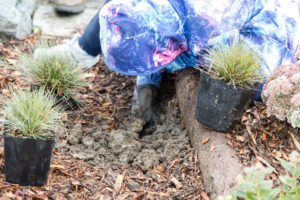
A student helps with the planting of the rain garden. Image courtesy of Seattle Public Utilities.
The culmination of a months-long collaborative effort, the ribbon cutting ceremony represented exactly that – a little solution to a collection of big problems.
And this little solution has a big impact – the rain garden now has the potential to hold up to 20,000 gallons of runoff from the school’s roof each year, ensuring that that runoff does not enter the sewer system and lessening the possibility of overflows into Lake Washington.
During the ribbon-cutting ceremony, looking out at the students who had worked so hard on the rain garden project for months, Principal Christopher Thomas reflected on the fact that “we now have a space to do really great things in. We don’t even know yet all of the things that this space will make possible.”
Student Engineering & Community Collaboration Success
In the weeks since construction ended, the rain garden has proven to be not only a powerful tool for managing stormwater runoff, but an important part of the school itself.
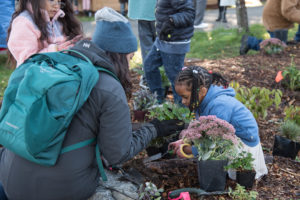
Celina Steiger works with students to plant the rain garden. Image courtesy of Seattle Public Utilities.
According to Kelli, her students have a sense of pride and responsibility about the project they were involved with every step of the way. “They love it,” she says. “We check on the drains on our street and clear them when we can. Often [students] talk about what they have seen as they come into school or when they see flooding in the news. They are very protective of the garden too. If anything is not right, they report it to me.”
By collaborating with community partners, IslandWood is able to work with teachers to take abstract concepts students are studying in their classrooms and make them feel tangible and real. Through this project, each student experienced first-hand the power they have to make change today.
With knowledge, collaboration, community, and creativity, the possibilities are endless.


